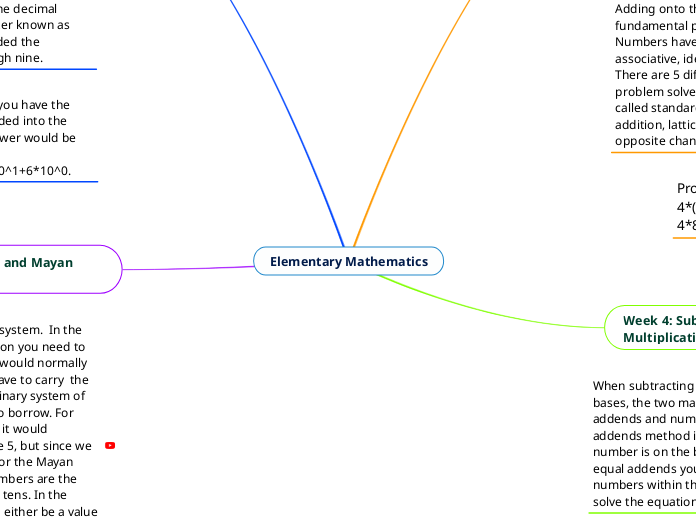
Order of operations is a rule that tells the correct sequence for solving a math expression. The correct order sequence to solving a math problem is parentheses, exponents, multiplication, division, addition, then subtraction. Adding onto that, there are 4 fundamental properties that Real Numbers have. Such as commutative, associative, identity, and distributive. There are 5 different algorithms to help problem solve, those algorithms are called standard algorithm, column addition, lattice, partial sums, and opposite change.
Problem Example:
4*(5+3)=?
4*8=32
When subtracting or multiplying in other bases, the two main points is equal addends and number lines. The equal addends method is used when the bigger number is on the bottom. When using equal addends you can round up the numbers within their bases so you can solve the equation like normal.
Problem Example:53 base 6-32 base six=?Add 2 to both numbers do round up, then that will make the top number bigger than the bottom, therefore you'll be able to subtract successfully. The new equation will be 55-20, which equals 35 base 6.
A base is a number or combination of digits that makes a system of counting to represent numbers. The word base refers to the digits that form a building block which expresses numbers. The most common system is the decimal system, which is better known as base 10, which included the numbers zero through nine.
Problem Example: If you have the number 2476. Expanded into the base system, the answer would be 2476 base 10= 2*10^3+7*10^2+4*10^1+6*10^0.
A binary is a two bases system. In the binary system of addition you need to carry, For example 1+1 would normally equal 2, but since we have to carry the answer is 10. For the binary system of subtraction you need to borrow. For example if you had 0-5, it would normally equal negative 5, but since we borrow it's positive 5. For the Mayan system, the bottom numbers are the units and the top is the tens. In the mayan system dots can either be a value of 1 or 20 depending on where the dots are specifically placed and the lines equal a value of 5.
Problem Example of Mayan Math: If you have the number 9, to put into base ten Mayan numbers it would be, - oooo. It would be a dash with 4 dots. If you have the number 137, to put into base ten Mayan numbers it would be a 5 dots with two dash lines and two more dots below it.^